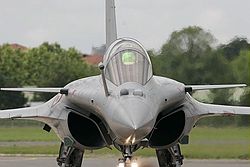Bob
Have a question related to this hub?
Alice
Got something to say related to this hub?
Share it here.
This article needs to be updated. (November 2016) |

An electro-optical targeting system (EOTS), is a system employed to track and locate targets in aerial warfare.[1] It can use charge-coupled device TV cameras, laser rangefinders and laser designators.
EOTS technology is designed for day and night operations, features stabilized lines of sight and automatic target tracking allowing operators to engage targets with high accuracy. They can be deployed on platforms such as aircraft, armored vehicles, or naval systems, providing extended-range detection of ground and aerial threats[2][3]